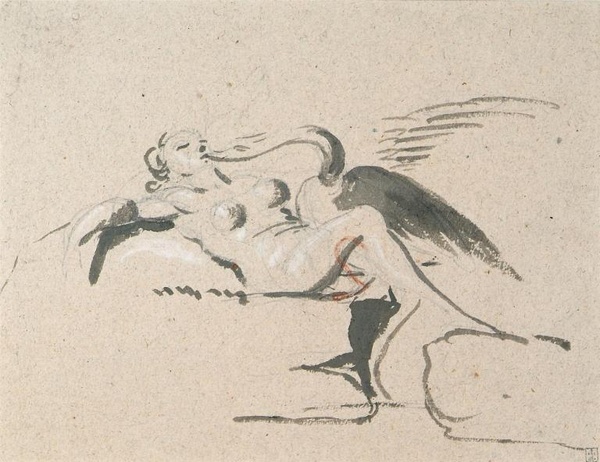Little mythologies
- https://en.laboverie.com/the-collections/the-beaux-arts-de-liege-collections/galerie-noire/small-mythologies
- Little mythologies
- 2024-03-08T10:00:00+01:00
- 2024-06-23T18:00:00+02:00
- Selection of prints and drawings : Small mythologies
-
- When Mar 08, 2024 10:00 AM to Jun 23, 2024 06:00 PM (Europe/Brussels / UTC100)
- Contact La Boverie +32 (0) 4 238 55 01 www.laboverie.com/
- Organizer La Boverie
- Location La Boverie
- Booking type Optional booking
- Price Visit included in the permanent collection
- Ticketing https://billetterie.laboverie.com
-
Add event to calendar
 iCal
iCal
Selection of prints and drawings : Little mythologies

Goddesses, gods, demigods or heroes, the divinities of Greco-Roman mythology and their representations have been ingrained in European minds and imagery since the Renaissance.
Early sources of inspiration centred on the writings of Homer (the epics of the Illiad and the Odyssey) and Hesiod (the Theogony). The Metamorphoses by the Roman poet Ovid also inspired artists and their patrons. Whether they were figures of divinities carrying symbolic meaning, or mythological episodes with a moralizing purpose, each representation activated the imagination. Icarus burns his wings when he flies too close to the sun, the fall of Phaethon after borrowing his father's sun chariot, the exploits of the hero Hercules (Herakles) and the intrigues, imprudence and amorous adventures of Jupiter (Zeus) and Venus (Aphrodite).
The aim of this selection is to show the diversity, but also the recurrence, of the themes represented in the museum's collections by artists from the 16 th to the 19 th centuries.
Mythological themes even formed the basis of the iconographic repertoire of most artists of the 16 th and 17 th centuries. The work of Lambert Lombard and Lambert Suavius is particularly prolific in this respect. The cult of Antiquity shared by these two artists can be seen in their studies of drapery and their taste for ruins, as well as in their remarkable anatomical studies. For other artists exhibited in the Galerie Noire, the influence of their trip to Italy led to a new iconographic repertoire, based essentially on Roman mythology. Life in Rome was an opportunity for artists to copy and pay homage to their Italian contemporaries, such as Annibale Carracci, Le Dominiquin, Le Bernin and Raphael. For artists from Northern Europe, the Italian experience was also an opportunity to copy ancient statuary, which they appreciated in the Belvedere Gallery, the Capitol, etc. The anatomical study of ancient bodies was an integral part of the academic curriculum of Italian and foreign artists alike. Mythology was used as a pretext for antique nudes; the figures of Hercules Farnese, Apollo from the Belvedere and Venus from the Capitoline Hill, among others, were commonplace in artists' studios from the 16 th century onwards.

Selection of prints and drawings : Small mythologies


